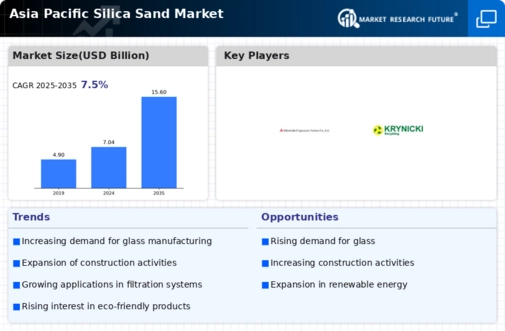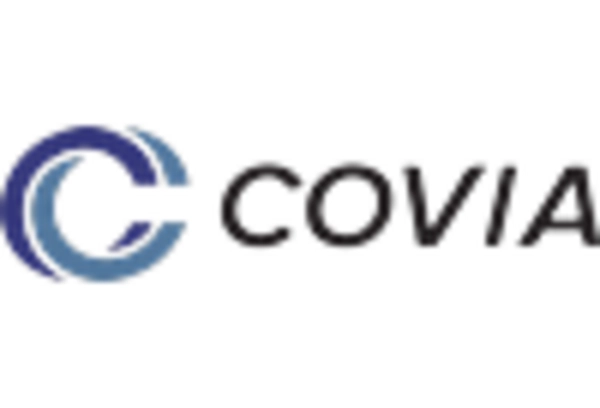Market Trends
Key Emerging Trends in the Asia Pacific Silica Sand Market
Recent trends in the Asia Pacific silica sand market have changed the industry. This industry is driven by strong building and infrastructure growth. Asia Pacific countries are investing substantially in urbanization projects, driving up silica sand consumption to meet the construction industry's insatiable appetite.
In Asia Pacific, the electronics industry is driving silica sand demand. Silica sand is essential to making semiconductor and electronics silicon wafers. With more people using electronics, silica sand consumption has increased. China, Japan, and South Korea, famed for their electronics industry, have driven this trend, affecting Asia Pacific market dynamics.
Environmental concerns and sustainable practices also influence Asia Pacific silica sand market trends. To ensure responsible silica sand mining and extraction, governments and regulatory organizations are enacting stricter environmental rules. This has led market participants to embrace eco-friendly mining practices and invest in silica sand extraction technologies that reduce environmental effect. Both producers and consumers in the Asia Pacific silica sand market prioritize sustainability.
Technology in silica sand mining and processing has also shaped market trends. Mining innovations like hydraulic fracturing have made silica sand extraction more efficient, meeting industry demand. Advances in benefaction technologies have allowed producers to supply high quality silica sand that meets end user needs. These technical advances have improved the supply chain and made the Asia Pacific market more competitive.
Globalization and trade have also affected Asia Pacific silica sand market trends. Due to cost competitiveness, quality standards, and regional demand-supply imbalances, silica sand imports and exports have increased. Surplus silica sand countries are major suppliers to those facing shortages or seeking specific grades for specialized applications. This worldwide commercial interaction has created a complicated yet integrated Asia Pacific market.

















Leave a Comment